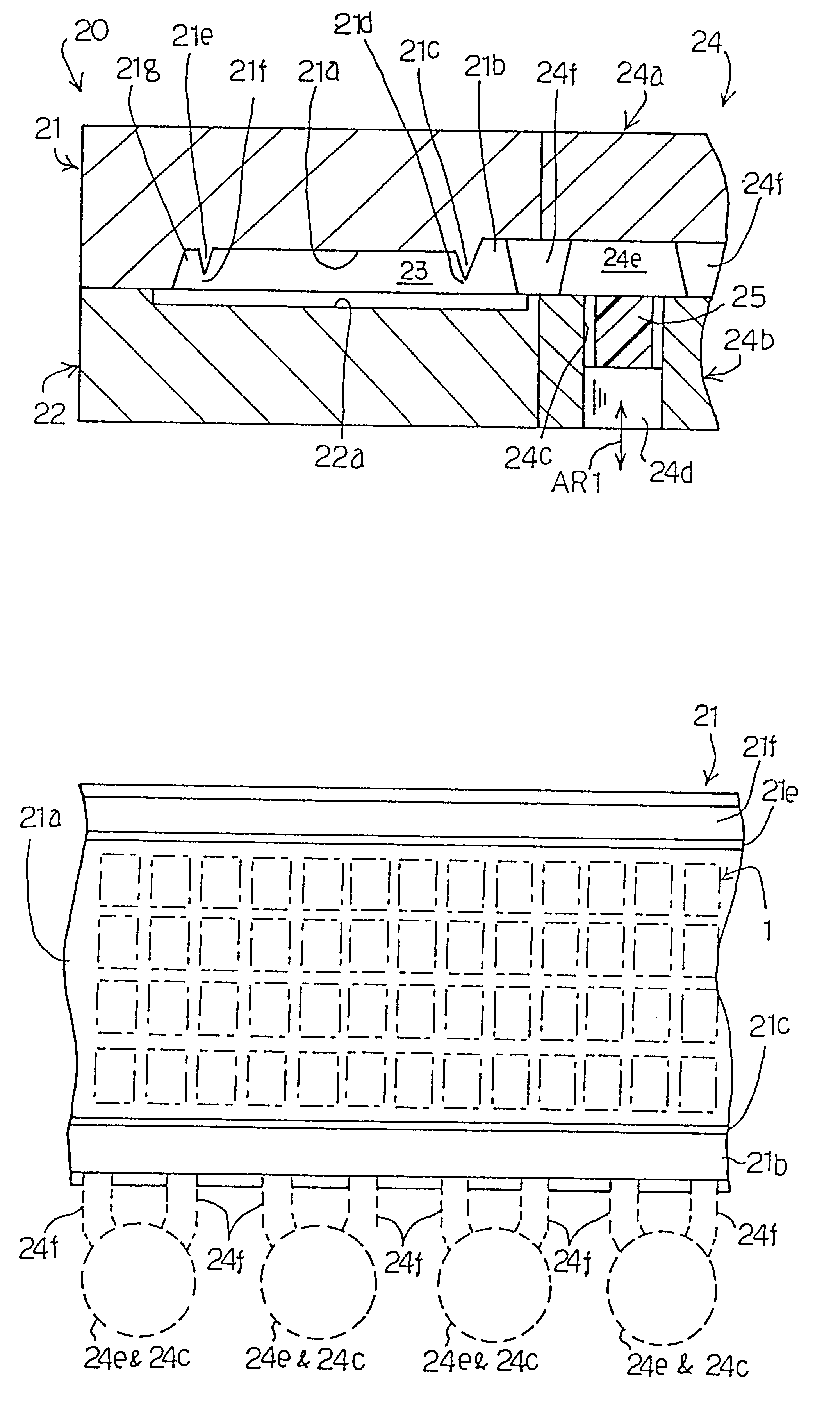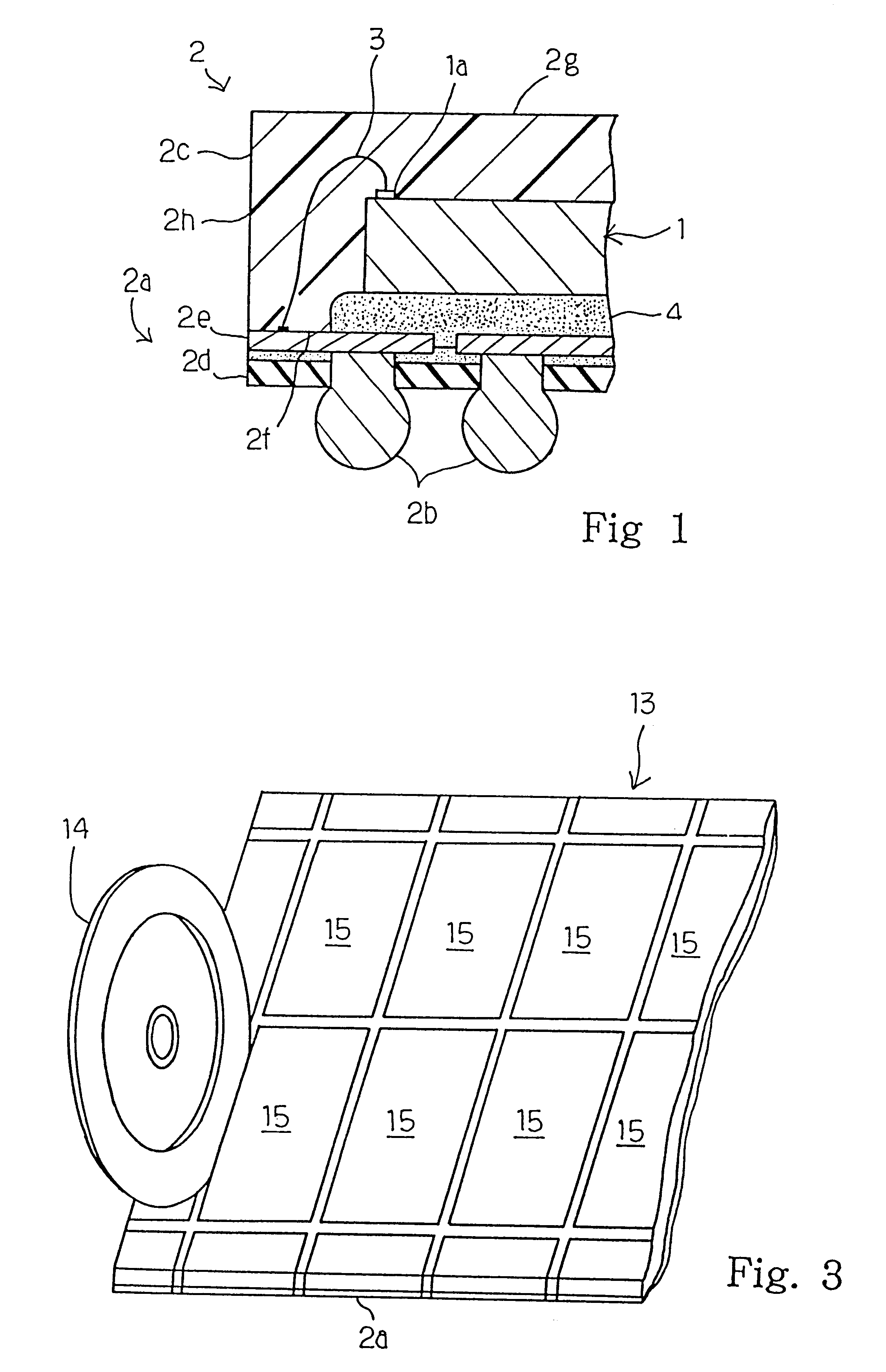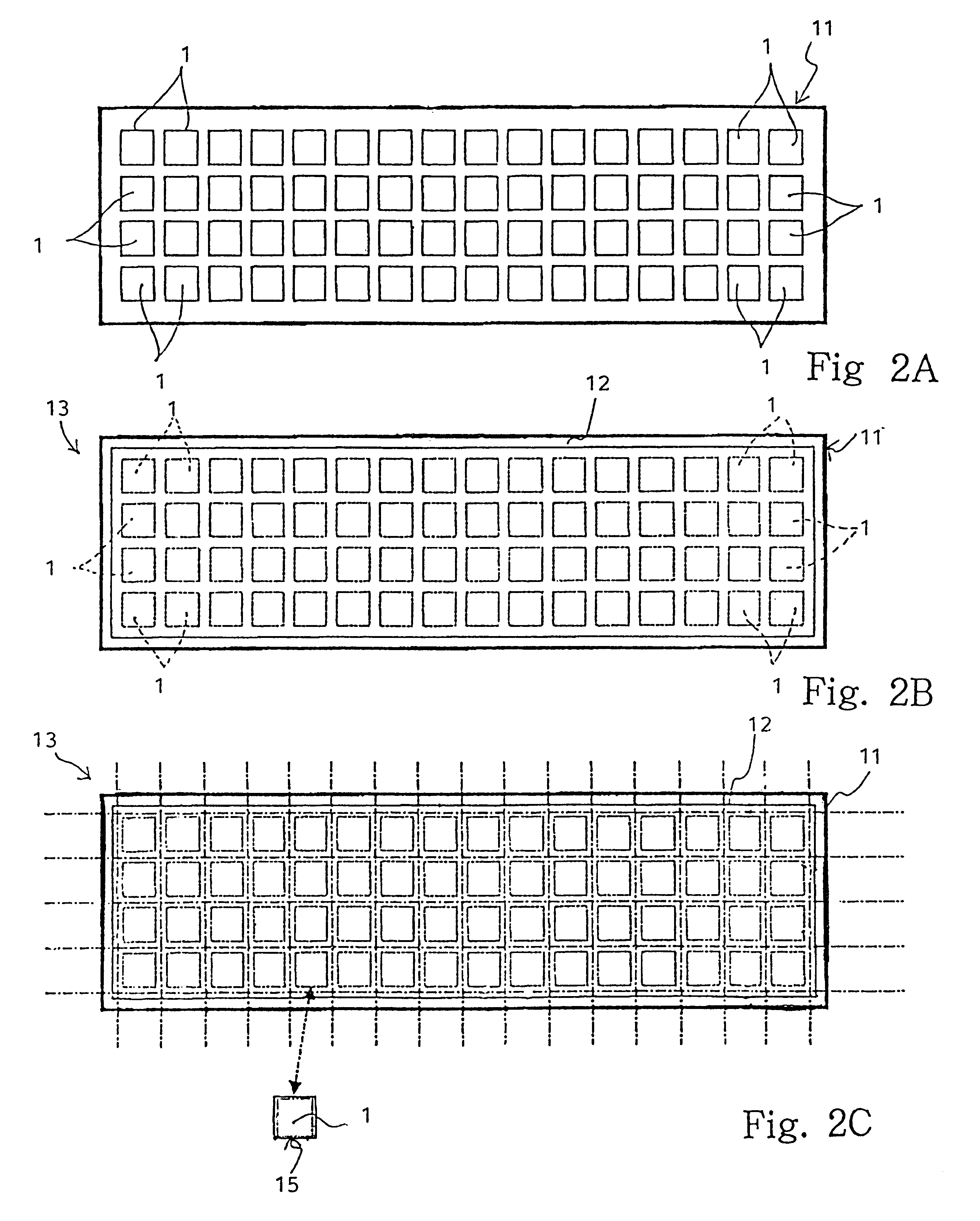Process for concurrently molding semiconductor chips without void and wire weep and molding die used therein
a semiconductor chip and molding die technology, applied in the direction of semiconductor/solid-state device details, manufacturing tools, food shaping, etc., can solve the problems of high density, glass fiber reinforced epoxy resin and polyimide tape, and the area occupied by semiconductor chips is only fifty percent of the total area of the expensive panel
- Summary
- Abstract
- Description
- Claims
- Application Information
AI Technical Summary
Problems solved by technology
Method used
Image
Examples
Embodiment Construction
FIG. 1 illustrates a semiconductor device fabricated through a process embodying the present invention. The semiconductor device largely comprises a semiconductor chip 1, a package 2 and conductive wires 3. Though not shown in FIG. 1, circuit components and wiring lines are incorporated in the semiconductor chip 1, and form an integrated circuit. The integrated circuit is connected to bonding pads 1a, and only one bonding pad 1a is shown in figure
The package 2 is broken down into a substrate 2a, ball bumps 2b and a piece of synthetic resin 2c. The synthetic resin is dielectric, and is a kind of thermosetting resin such as, for example, a long gel type thermosetting resin. The substrate 2a includes an insulating tape 2d such as, for example, polyimide and a conductive pattern 2e of copper adhered to the insulating tape 2d. Though-holes are formed in the insulating tape 2d, and the conductive pattern 2e is exposed to the through-holes. The ball bumps 2b pass through the through-holes,...
PUM
| Property | Measurement | Unit |
|---|---|---|
| Length | aaaaa | aaaaa |
| Flow rate | aaaaa | aaaaa |
| Width | aaaaa | aaaaa |
Abstract
Description
Claims
Application Information
 Login to View More
Login to View More - R&D
- Intellectual Property
- Life Sciences
- Materials
- Tech Scout
- Unparalleled Data Quality
- Higher Quality Content
- 60% Fewer Hallucinations
Browse by: Latest US Patents, China's latest patents, Technical Efficacy Thesaurus, Application Domain, Technology Topic, Popular Technical Reports.
© 2025 PatSnap. All rights reserved.Legal|Privacy policy|Modern Slavery Act Transparency Statement|Sitemap|About US| Contact US: help@patsnap.com



